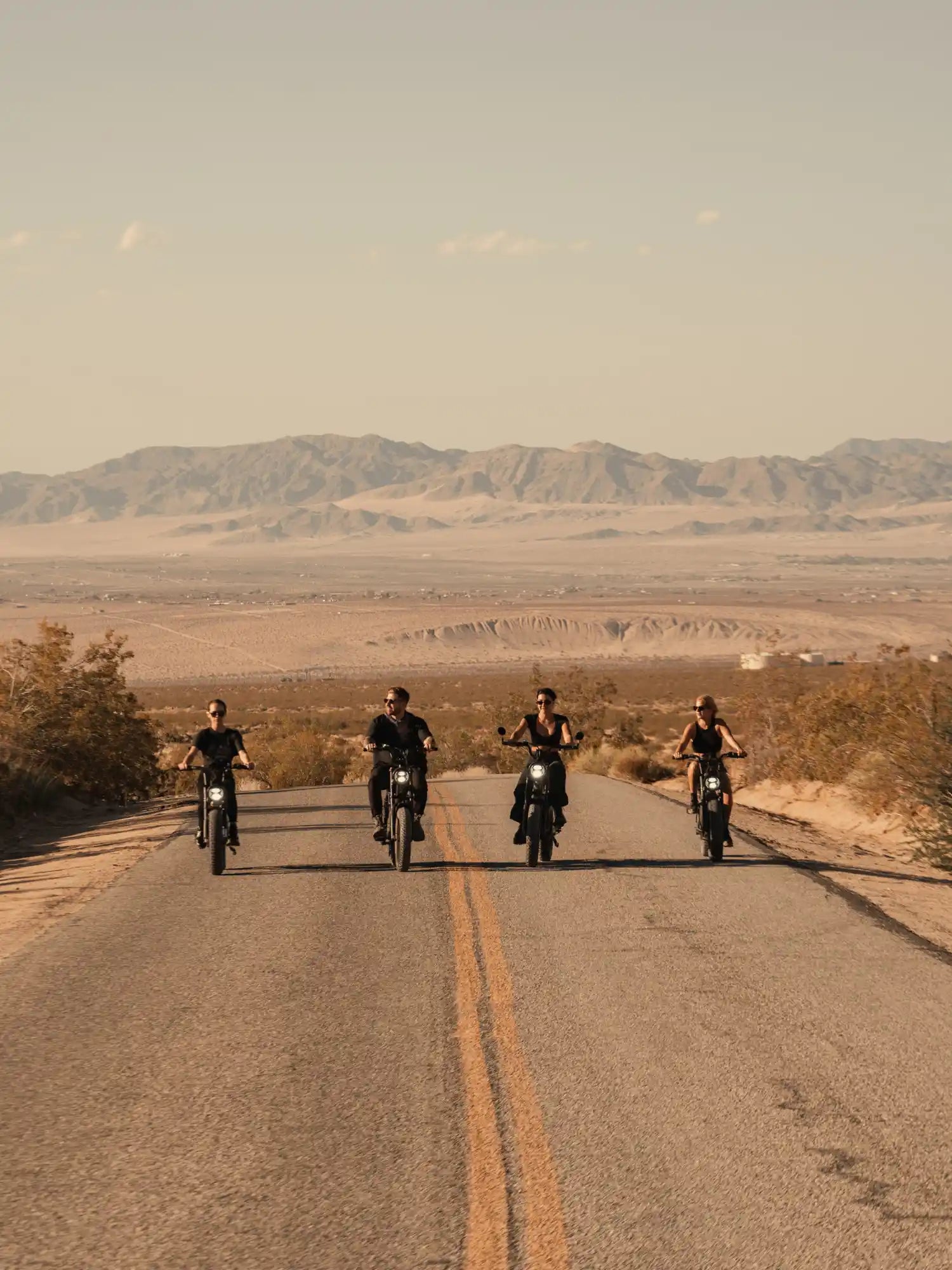Electric bikes gain fast ground as people prefer them for making inaccessible areas easier to negotiate. Equipped with high-voltage motors at different levels of assistance, e-bikes will definitely be able to help riders easily conquer steep inclines. This article will discuss how well electric bikes can do on hills and what factors influence their climbing capabilities.
Understanding the Power of Electric Bikes
Electric bikes, better known as e-bikes, are really changing the way we think about commutes, fitness, and outdoor adventures. For eco-conscious commuters, enthusiasts of cycling, and tech-savvy cyclists, they represent an exciting mix of technology and practicality. One question cuts across all, though: are electric bikes any good on hills? This blog post aims to answer that and provide you with all the information you will need to give any incline a go with confidence.
The Technology Behind Electric Bikes
Electric bikes are a fusion of traditional mechanical cycling with state-of-the-art technology. We explore, from powerful motors to intelligent battery management systems, the major technologies that make e-bikes an innovative means of transport.
What Makes an E-Bike Different?
Fundamentally, an electric bike is a bicycle fitted with an electric motor and a battery. It can provide pedal-assist or full-throttle options. These things combine to provide added power when needed.
Types of E-Bike Motors
There are basically three types of e-bike motors available in the market: hub motors, mid-drive motors, and friction drive motors. Hub motors are located in the wheel hub itself, which gives a smooth ride. Mid-drive motors have placement at the bike's crank, so it offers much better weight distribution and balance. Friction drive motors are less common, but they attach to the bike's rear wheel.
Battery Life and Performance
The battery life is variant across models and uses, but lithium-ion batteries are pretty much standard on most e-bikes, guaranteeing reliable power for your ride. If you look after the battery properly, you could squeeze several years' use out of it, and they typically take between 3-6 hours to charge.
The Science of Climbing Hills
Cycling uphill is a challenge unto itself: physics, endurance, and technique all have to come together. In this article, let's break down the physics of hill climbing and how traditional and e-bikes can make riding steep gradients easier.
How Do E-Bikes Handle Hills?
The key feature that makes an e-bike hill-capable is, of course, the motor and its output power. The motor allows for extra torque, making it easier to pedal when the road is uphill. So, this will take lesser strain off your legs, hence keeping one very steady.
Torque and Its Importance
Torque is measured in newton-meters, and it's the force that turns your wheels. If you have higher torque, you will have better hill-climbing capabilities. Most e-bikes designed for hilly terrain are available with 60Nm to 80Nm torque, making certain that steep inclines won't be a problem. With higher torque power our Gibbon and Bonobo e-bikes can handle hills easier.
Real-World Performance
It, however, very much would make a difference in climbing hills with an electric bike. Most riders reported that one seems to glide up hills without excessive strain, even on quite steep gradients. This combination of motor power and pedal input ensures a smooth and endearing ride.
Benefits of Electric Bikes for Hilly Terrain
Electric bikes have significant advantages over other types of bicycles when it comes to traveling across hilly terrain because they provide supplementary power and lighten the rider's load. The paper reviews how e-bikes would excel in steep incline riding experiences and why they can be an ideal choice for hilly environments.
Reduced Physical Strain
Another added advantage of using an e-bike over hills is that it spares one from tiring physically. With motor assistance, one uses less energy and therefore enjoys his or her long ride and does not get exhausted.
Increased Accessibility
E-bikes are making hilly areas accessible to so many more riders. With a little added boost of power, cyclists of all skill levels can enjoy riding new routes to new destinations, without the fear of steep climbs ahead.
Enhanced Commuting Experience
For those using e-bikes daily commutes, it will change the experience traveling around hilly cities. You get to your destination one piece, not all sweaty and dog-tired. It makes e-bikes an excellent choice for an eco-conscious commuter who has the desire of keeping the environment clean and yet is practical with their mode of transportation.
Choosing the Right Electric Bike for Hills
Choosing the right e-bike for places full of hills requires consideration of several things, including the power output of the motor, the capacity of the battery, and gear systems. In this article, we will help you through all the major features you need to consider when picking an e-bike that will help you satisfactorily negotiate steep climbs with confidence.
Key Features to Look For
Consider the following features in your e-bike while using it in hilly areas:
• Motor power (measured in watts)
• Battery capacity is measured in watt-hours.
• Torque (Nm)
• Gear system compatibility
Customization and Upgrades
Keep in mind, however, that many ebikes are customisable. A new battery or motor could provide performance upgrades; accessorizing with wider tires can increase your traction as you're climbing a steep slope.
Practical Tips for Riding E-Bikes on Hills
Build your climb from gear-down for much smoother pedaling and to enable the motor to give its support. This approach will enable you to maintain control and pace as you drive up the incline.
Take advantage of the different levels of pedal assist available on most e-bikes, allowing you to start at a lower level of assist and progress to higher levels as needed to conserve your battery charge and make sure that you have enough power to finish your journey.
There are times when riders climb hills, so one must maintain a constant speed. Avoid quick speeding and acceleration, as such can quickly decrease the battery level. Instead, keep a consistent, controlled speed for maximum performance and efficiency from your e-bike.
Common Myths About E-Bikes and Hills
What is much said through total misconception is how not being able to cycle up a hill well on an e-bike makes some people feel. Let's now dispel these myths regarding e-bikes and hills, laying down the facts so the true potential of your e-bike can be appreciated.
Myth 1: E-Bikes Are Only for Flat Terrain
This could be furthest from the truth as e-bikes are highly capable on hilly terrain. Just like in any other type of bicycle, the right setting up of the motor and the battery makes it effortless to tackle steep inclines.
Myth 2: E-Bikes Makes You Lazy
Even though you are riding an e-bike, it still requires pedaling. It provides a balanced workout where motor assistance is there to make it a bit more pleasurable and less strenuous so that one rides more frequently.
Myth 3 : E-Bikes Are Not Reliable
Modern e-bikes have quality components in their design; therefore, one is assured of reliability and durability. Proper care with routine maintenance will have your e-bike running great at all times.
Community Insights and Testimonials
Hearing from real riders can be very helpful in gaining insight into the true e-bike experience, especially on handling various terrains. Below, we have dedicated a community section with testimonials and perspectives to give you a feel for how an e-bike handles everyday scenarios.
Listening to others who have ridden a bike can give a person excellent insight into the advantages of e-bikes. So many riders recount their positive journeys with e-bikes on hills, emphasizing how easy and pleasurable it is to have that extra boost during their rides.
Cycling enthusiasts and experts very often praise e-bikes for their adaptability and efficiency, thus giving you confidence in your choice. You will also connect with others, be able to share tips, and stories and keep updated on new developments within the niche by joining virtual platforms of people on e-bikes.
Future Innovations in E-Bike Technology
Continuous improvements in motor design are making more powerful and efficient e-bike motors, which promise even greater performance on hills in the future. As these technologies develop, so the expectation is that e-bikes will handle even the most challenging terrains with ever-greater ease and power.
Battery technology is also evolving rapidly, so in the near future, most definitely, an e-bike will be run by a far-longer-running battery that will also charge within minutes, making the ride experience impeccable. Additionally, it will integrate with GPS navigation and performance tracking, so the e-bikes will become easier to use and more efficient, having a connected and joyful ride.
Conclusion
Electric bikes definitely can help in hills, making them the perfect choice for all environmentally conscious commuters, cycling enthusiasts, and outdoor adventurers. There are several advantages to e-bikes related to tackling hilly terrain, from reducing physical strain to promoting sustainable transportation. Understand the technology, pick the right model, and follow practical tips to confidently conquer any incline.









Leave a comment
All comments are moderated before being published.
This site is protected by hCaptcha and the hCaptcha Privacy Policy and Terms of Service apply.